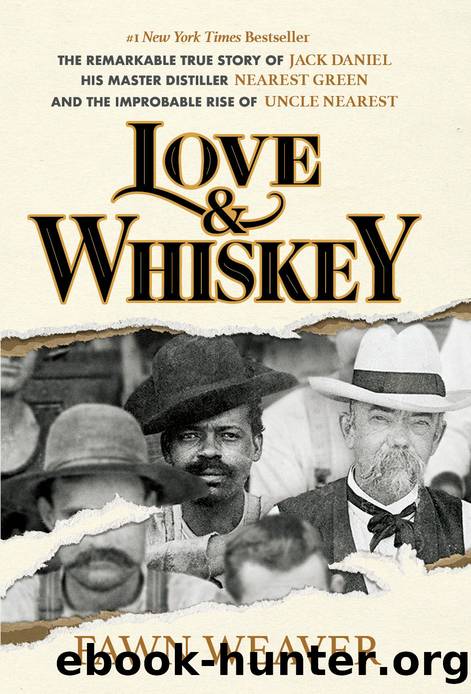Love & Whiskey by Fawn Weaver

Author:Fawn Weaver
Language: eng
Format: epub
Publisher: Melcher Media Inc
Published: 2024-07-29T00:00:00+00:00
CLAY RISEN, who grew up in Nashville, later shared that heâd had a hard time getting a sense of the weight of the Nearest Green story for Lynchburg residents. âYou hear people talk about, âWell, we all knew [Nearestâs story],â â Clay said. But âno one celebrated it. No one talked about it as anything special. And why was that? One way to read that is, âOh, itâs because it was normalized. And it was understood that Black people make a contribution to the community.â â On the other hand, Clay suggested, it might be read as, â âYeah, thatâs something we donât talk about because we donât like the implications of it.â â
Clay later told me itâs often hard for outsiders (like me) to understand that these âbitter ironies or weird nuances about race relations are just taken as part of the water in the airâ in the South. The ironies of having people like Nearest play such a pivotal role in Southern culture are âwell-known and utterly uninteresting to a lot of people,â Clay said. For many of them itâs, âWell, thatâs the way it is.â
The Heritage of Moore County book was a wonderful repository of history, and there were more Black people collected within its pages than Iâd found through any other source. I learned what life had been like after the Depression, through World War II, and into the civil rights era through its residentsâ own words. A member of the Bobo family wrote about the way Moore County was âracially segregated during the late thirties, forties, and fifties,â but that there was âa very good relationship between the blacks and whites.â
He went on to list a great many people whose names had become familiar to me, including quite a few of Nearestâs descendants or members of their familiesâSis Eady, Hyram Daniel, Clinton âPossumâ Daniel, L. B. and J. B. McGowan, Dill Dismukes, Hubert and Henry Green. Sis had worked at Holtâs appliance store; Hyram Daniel was the Farmers Bank custodian; Possum Daniel was the blacksmith. Hubert Green was in charge of the cemetery, and Henry was employed at Priceâs Service Station.
Other people fondly recalled watching the Black baseball team play on the weekends. The team was full of talented players and often won their games against other Black teams from Shelbyville or Tullahoma. They wore red hats and socks and unofficially called themselves the Jack Danielâs team. Plenty of white people seemed to watch both the Black and the white teams, which traded off weekends at the high school field. âThere were enchanting Sunday afternoons spent watching the Black communityâs baseball games,â a white man named Bill Copeland recalled.
âI remember âHamâ Daniel was playing third base,â a white man named Frank Larry Majors wrote about a Sunday game when he was seven or eight years old. The batter hit a line drive, hard and fast, and Ham didnât have time to turn to catch with his gloved hand. âHe just leaped into the air toward the baseline and caught it with his bare hand.
Download
This site does not store any files on its server. We only index and link to content provided by other sites. Please contact the content providers to delete copyright contents if any and email us, we'll remove relevant links or contents immediately.
Down the Drain by Julia Fox(924)
The Light We Carry by Michelle Obama(857)
Cher by Cher(718)
Simple Passion by Annie Ernaux(698)
Love, Pamela by Pamela Anderson(571)
Zen Under Fire by Marianne Elliott(537)
You're That Bitch by Bretman Rock(517)
The Foxfire Book of Appalachian Women by Kami Ahrens(499)
Novelist as a Vocation by Haruki Murakami(497)
Kamala Harris by Chidanand Rajghatta(473)
Alone Together: Sailing Solo to Hawaii and Beyond by Christian Williams(462)
The Nazis Knew My Name by Magda Hellinger & Maya Lee(441)
Gambling Man by Lionel Barber(436)
Drinking Games by Sarah Levy(397)
The Barn by Wright Thompson(389)
A Renaissance of Our Own by Rachel E. Cargle(385)
Memoirs of an Indian Woman by Shudha Mazumdar Geraldine Hancock Forbes(384)
Limitless by Mallory Weggemann(382)
A new method to evaluate the dose-effect relationship of a TCM formula Gegen Qinlian Decoction: âFocusâ mode of integrated biomarkers by unknow(363)
